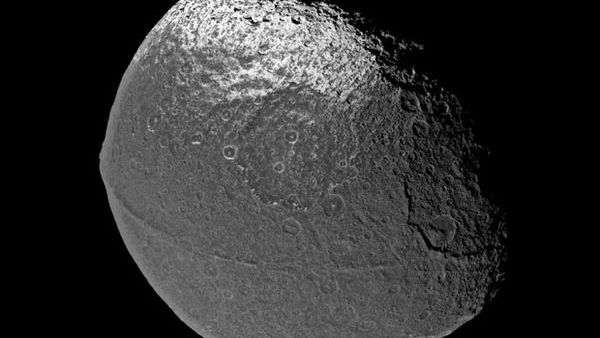
On This Day In Space: Oct. 25, 1671: Saturn’s Yin-Yang Moon Iapetus Discovered by Giovanni Cassini (Image Credit: Space.com)
On Oct. 25, 1671, the Italian astronomer Giovanni Cassini discovered a new moon at Saturn! Iapetus was the second moon anyone had ever found orbiting Saturn, and it was the first of four moons Cassini would discover at the ringed planet.
The Dutch astronomer Christiaan Huygens had discovered Titan, the largest of Saturn’s moons, about six years earlier. After Cassini found Iapetus, he also found the moons Rhea, Tethys and Dione.
Related: The Rings and Moons of Saturn

When Cassini first saw Iapetus, the moon looked like a tiny speck on the west side of Saturn. He calculated its orbit and thought he would be able to see it again on the east side of Saturn 39 days later, but it was nowhere to be seen. When it reappeared on the west side again, Cassini realized that Iapetus must be darker on one side than the other, which made it harder to see when the dark side was facing Earth.
More than 300 years later, NASA sent a spacecraft named Cassini to Saturn, and that Cassini took some pretty awesome photos of Iapetus. Realizing Iapetus kind of resembled a yin-yang, it has since been nicknamed the “yin-yang moon.”
On This Day in Space Archive!
Still not enough space? Don’t forget to check out our Space Image of the Day, and on the weekends our Best Space Photos and Top Space News Stories of the week.
Follow us @Spacedotcom and on Facebook.





